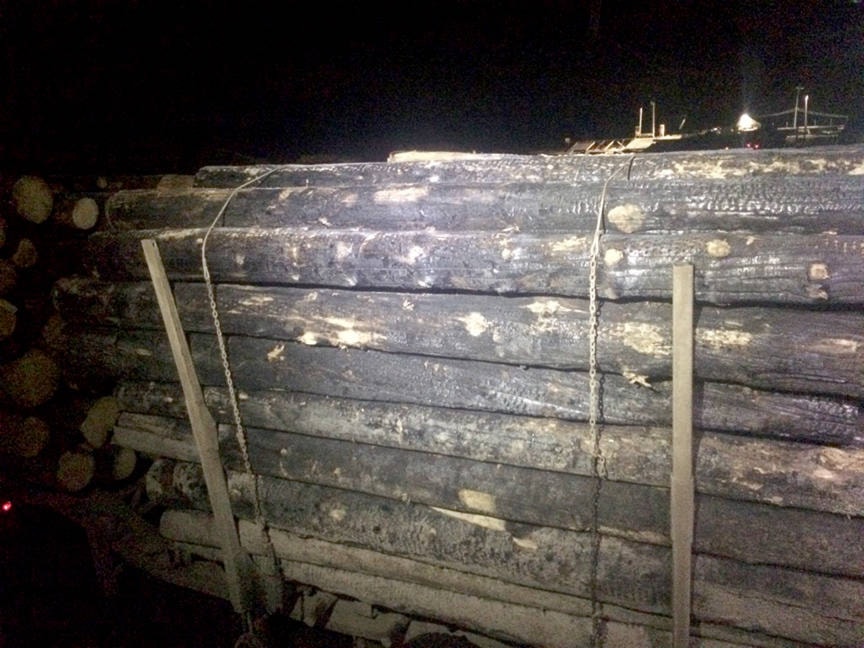They might look charred and useless, but some of the burned trees left over following last summer’s wildfires are heading to saw mills in the region.
Steve Zika, chief executive officer of Hampton Affiliates, which owns the Babine Forest Products mill confirmed to Lakes District News that some burned logs are expected to be taken in.
“The burnt volume would probably not exceed 10 per cent of our timber consumption in 2019,” Zika said.
With the relatively low intake of burned timber, the quality of the output also tends to be lower.
“Chips resulting from burnt logs may not be of sufficient quality for our chip customers,” said Zika, who added that the fire damage can also affect the quality of the lumber.
Canadian Forest Products (Canfor) also takes burned timber.
“After the worst summer of wildfires on record, Canfor is planning on harvesting, delivering and processing as much burnt wood as possible this spring and summer. Logs with burnt bark but intact fibre will be sent to our Houston mill for processing. We make every effort to harvest burnt wood before it degrades from exposure,” said Canfor spokeswoman Michelle Ward.
West Fraser’s mill in Fraser Lake accepts burned timber as well.
The burned volume has accounted for about 10 per cent of the total intake, which will increase to 15 or 20 per cent over the next year, explained Tan Calhoun, Woods Manager at the Fraser Lake mill.
There is still timber burned in last summer’s fires that is currently being salvaged, he said.
“We started salvaging right away after the fires.”
The mill faces specific challenges when processing burned timber, such as ensuring the charcoal doesn’t get into the wood chips, and with charcoal dust.
“Dusty material quickly clouds the de-barker scanners that are needed to size logs. When dust covers the scanners, the de-barker doesn’t work correctly, because the scanners provide the information to adjust the optimal speed for the size of the log going through it,” according to an information page on West Fraser’s website.
When the burned volume might not be of sufficient quality for lumber, it is used as fuel.
“We have an energy plan, in some of the more heavily burned stands we’re able to use it for hog fuel - an input material for electricity plants. We have an energy plant on site. We can utilize lower quality for the fuel. It’s a standalone facility. It uses sawmill waste and other residual fibre and logs we can grind for making hog fuel,” Calhoun said.
About 450,000 cubic metres of fire-related cutting permits have been processed by Nadina Resource District staff since Jan. 2, 2019, said Jeremy Uppenborn, spokesman for the Ministry of Forests, Lands, Natural Resource Operations and Rural Development (FLNRORD).
Submission of more permit applications is also ongoing.
“In Nadina Resource District, active forest tenures cover 100 per cent of the timber harvesting land base burned in 2018,” Uppenborn added.
Last year, 98,000 cubic metres of burned timber - left over from 2017 - was harvested for West Fraser in Williams Lake.
READ MORE: West Fraser continues burned timber salvage in the Cariboo Chilcotin
Blair McBride
Multimedia reporter
Send Blair an email
Like Lakes District News on Facebook
